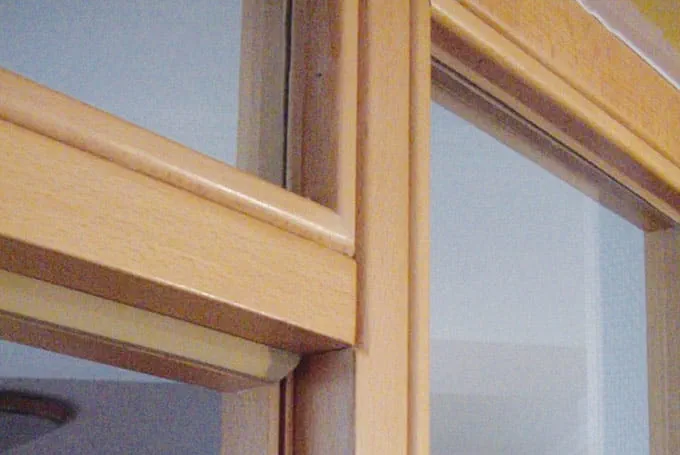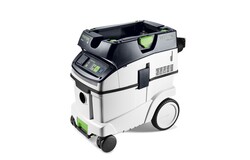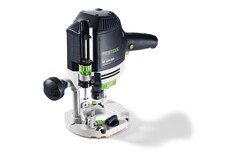Routing grooves for a door seal

Description
The router and a disc groove cutter can be used to countersink any type of sealing profile in doors or to subsequently rout door seals with no problems.
Disc groove cutters are available in different thicknesses matching the different profile sections and also with different bearing guides. The bearing guides are used to define the depth of the groove and ensure simple execution of the application.
Tools/accessories
Alternative tools
Preparation/set-up
-
Please make the following preparations before notching the door seals:
- Process the wood of the blind or block frame before gluing.
- Secure the frame wood on the multifunction table so that the workpiece is freely accessible and can be easily worked on.

-
Now set up the router as follows for routing:
- Clamp the disc groove cutter in the shaft of the router; the router shaft should be inserted and clamped up to the minimum clamping depth (mark on cutter).
- Set the speed level according to the material and the cutter diameter.

-
Set the routing depth with the depth setting device by placing the blades of the disc groove cutter onto the workpiece and then selecting the routing depth corresponding to the door seal. Even when the rebates for the door are being prepared, the width of the door seal must naturally be taken into account. Our example uses a standard width of 12 mm.
In this example, the routing depth is calculated as follows for routing a 4 mm wide groove:
(Seal width/2) + (disc groove cutter thickness/2) = depth setting for the router
In our example, a 12 mm wide seal and a 4 mm disc give a routing depth of 8 mm.
In accordance with the groove depth to be produced, choose the correct cutter spindle with a ball bearing guide diameter of 16 mm or 28 mm.
Procedure
-
Proceed as follows when routing:
Position the router at the side of the workpiece so that you can route in reverse direction. Next, adjust the routing depth at the router and set it using the locking button on the front side of the router.
-
After routing the groove, the door seal can be inserted easily.

-
Our illustrated guides and work results are documented working steps that we have performed in practice. They are individual examples and do not guarantee or promise that users will obtain the same results. The results will depend on the user's experience and skill, as well as the material being used. Illustrated guides do not replace any Festool operating manuals and/or safety instructions. Liability for ensuring that the information, instructions and applications are free from content defects and defects of title, in particular with regard to the absence of defects, correctness, freedom from third party intellectual property rights and copyrights, completeness and fitness for purpose, is excluded. Claims for damages made by the user, regardless of their legal basis, are excluded. These liability exclusions are not applicable if the damage was intentional or caused by gross negligence, or in cases of statutory liability.
We cannot accept liability for damage resulting from defects.↑





































